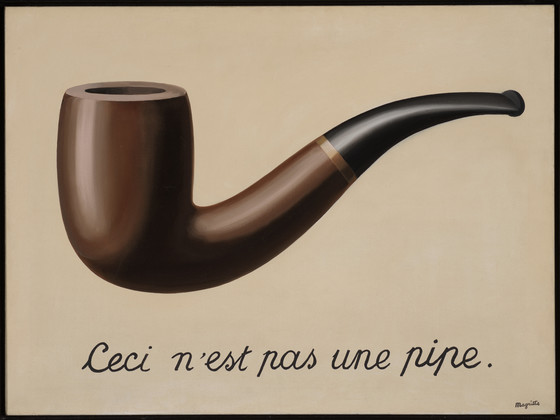

René Magritte had the right idea with his famous painting Treachery of Images. The photo, which clearly pictures a tobacco pipe, is paired with the caption, “This is not a pipe.” This leaves users asking, “If it’s a not a pipe, then what is it?” As an artistic expression, it’s thought-provoking and edgy. But for an ecommerce product, this can be your worst nightmare!
Often, ecommerce stores will sell a product where the usage appears obvious to the seller – but to someone who is new to the industry or product – more explanation is necessary to keep potential buyers on your site. While store owners may add information in the description, most people online will only browse through photos. Neglecting to include captions to your images may add to the confusion and cause a missed sale. Below are some tips to help make sure your image captions clearly describe your product, so you don’t end up with customers thinking your tobacco pipe is a tuba.
Tips for Writing a Successful Photo Caption
When it comes to engaging readers, studies suggest people read captions more than they read the headline. This means the detailed descriptions throughout your site may go unread more often than not, whereas those small snippets that clarify what is going on in your product images are more likely to be read.
Without context in photos, users can be left with ambiguity, asking questions about the size of the object or wondering how it works. Let’s take a tobacco pipe, for example. You may post a picture of a luxurious pipe for sale against a white background, but without a caption users may be unsure of the size or material. Is the wooden pipe as big as the user’s hand or just big enough to produce a few good puffs before being refilled? Is it made from an oak tree or an olive tree?
The description should be more than a few words and less than a few sentences. The goal is to engage readers with a succinct explanation of the photo. When writing, it’s important to:
-
Know your audience. Target a description that details how the product is used or what it is used for. Is your product for professionals? Is it innovative and you’re the only one selling it? Knowing who you are selling to will help you create relevant descriptions that appeal to the targeted demographic.
-
Be descriptive. While images on product pages may work together to paint an obvious understanding of the product, images that appear elsewhere on your site may confuse visitors. Make sure your captions explain what is happening in the picture. Your image may show a person in an armchair smoking a pipe. Captions can help users understand that you are only selling the pipe as opposed to accessories or herbs to go in the pipe depicted in your picture.
-
Keep it simple. Since your shoppers are more likely to read your captions over your product details, you will want something engaging and easy to digest. The goal is to find the balance between something that piques their interest and has them wanting to learn more and something that showcases what your product has to offer over your competitors. For example, a basic caption can be made into a better caption by adding descriptive content.
Basic caption: 'Tobacco Pipe'
Better caption: 'Handcrafted Olive-Wood Pipe for Smoking Tobacco and Other Herbs' -
Be inclusive. Captions can also double as alt text, which not only tells search engines what is in the image but also helps visually impaired people interact with the image to understand what it’s about. Modern technology allows websites to be accessible by reading captions aloud to allow everyone to interact with the image and visualize the contents. An unclear or missing caption can confuse potential buyers.
Overall, the more users understand and feel connected to your product, the more likely they are to make a purchase. Providing captions under images can help shoppers make a decision more quickly and give them confidence that this is the product they are looking for.
Have questions about writing the best photo captions for your ecommerce website? Just ask us in the comments below!











